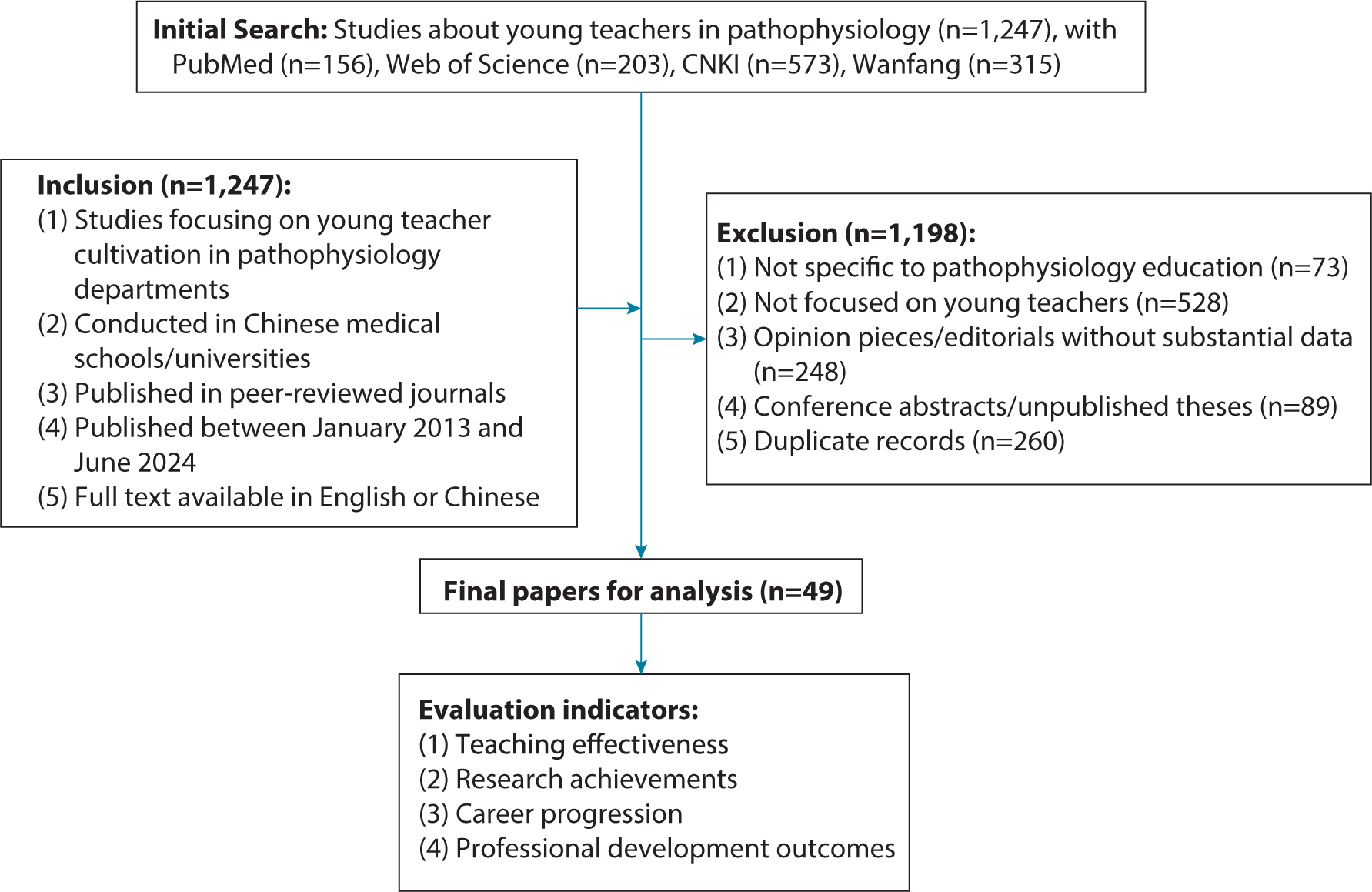
This narrative review examines the challenges, strategies, and future directions in the development of young teachers within the pathophysiology departments of Chinese medical colleges. A thorough review of 49 studies published between 2013 and 2024 was carried out using PubMed, Web of Science, and various Chinese databases. The primary challenges identified include teaching innovation (cited in 84.2% of the studies), research pressure (91.2%), disciplinary characteristics (87.7%), and career development (80.7%). Medical schools have responded by enhancing training systems (94.7%), innovating teaching methods (93.0%), and bolstering research support (96.5%). Looking ahead, trends are shifting toward the application of new technologies, interdisciplinary integration, and international collaboration. The focus on cultivating young teachers is increasingly geared towards personalization and diversification, which are essential for advancing education in pathophysiology. High-quality young teachers are pivotal in raising teaching standards, fostering research innovation, and facilitating interdisciplinary exchanges. Based on these insights, we recommend several practical measures to enhance the quality of pathophysiology education in China. These include establishing comprehensive training programs that integrate teaching innovation and research skills; developing structured mentorship systems with clear pathways for career advancement; creating platforms that support technology-enhanced teaching and international collaboration; and implementing systematic evaluation mechanisms to assess teaching effectiveness. These targeted interventions will require a coordinated effort from department heads, educational institutions, and policymakers to ensure a sustained improvement in the quality of pathophysiology education.
 , Zhong Yuan
, Zhong Yuan , Hu Yao
, Hu Yao
Blood and urine are commonly used specimens for clinical testing, and their contents, particularly exosomal microRNA (miRNA), are diverse, reflecting the metabolic activities of tissues and organs in the body.
Blood and urine samples were collected from six healthy adults. Exosomes were then enriched from these samples, followed by sequencing and bioinformatic analysis of exosomal miRNA.
The comparative analysis of miRNAs in blood and urine revealed that 41 miRNAs were more abundant in blood, while 61 were found at lower levels. Notably, hsa-miR-934 was among those with higher expression in blood, whereas hsa-miR-425-5p was one of the miRNAs with lower expression. Kyoto Encyclopedia of Genes and Genomes pathway analysis indicated that the target mRNAs of differentially expressed exosomal miRNAs (DEexo-miRNAs) in both blood and urine are implicated in various signaling pathways, including proteoglycans in cancer, axonal guidance, and the regulation of the actin cytoskeleton. Additionally, the target mRNAs associated with DEexo-miRNAs in urine were also linked to processes such as ubiquitin-mediated proteolysis and the phosphatidylinositol signaling system. In contrast, the target mRNAs corresponding to DEexo-miRNAs in blood were involved in the FoxO signaling pathway and chronic myeloid leukemia, among others.
This study observed differential expression of exosomal miRNAs in blood and urine, thereby enriching the available library of exosomal miRNA for these two sample types. It also lays the groundwork for the detection of exosomal biomarkers from blood and urine.
Citations


